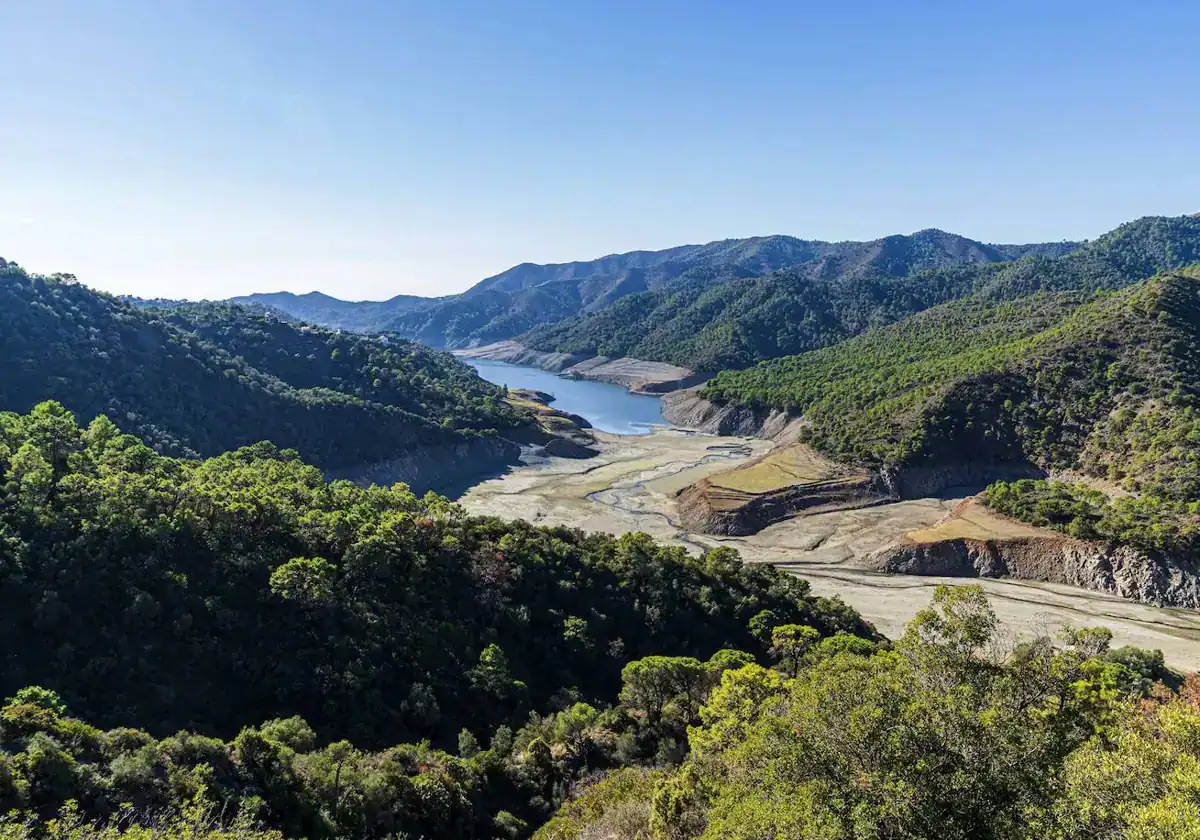Marbella reservoir: the three steps that guarantee use of nearly every drop of water
Andalucía's fourth drought decree has been approved and includes a review of vital works carried out in 1982 and 1995, when water levels in La Concepción were also dangerously low
Chus Heredia
Friday, 2 February 2024, 15:29
Plans to make the most of the last drops of water out of the La Concepción reservoir are included in the latest drought decree approved by the Junta on Monday 29 January.
One of the actions published in the BOJA (official gazette of the Andalusian regional government) stated: "Optimisation and improvement of the dead reservoir facilities in La Concepción."
What does this mean? Sources told SUR that for the past year technicians have been maintaining a series of systems that will allow the maximum amount of water to be extracted from the dam, which now has a negligible "dead reservoir" area due to these works.
A reservoir is declared dead when it falls below 11% of its capacity or when it is impossible to continue extracting water from it, because what is left at the bottom is only mud.
And how has it been possible to improve the levels of this reservoir? It goes back to actions carried out during the severe droughts of 1982 and 1995. La Concepción had just five cubic hectometres in 1982 (it now has 13.1). Its 1982 level was below the level necessary to extract water for drinking. But that changed with the addition of pumps and other filtration systems.
In 1982, the pumping and piping station at the dam was adapted to be able to use 4 hm3 of the dead reservoir. Then, in 1995, it was possible to use a further 0.9 hectometres, 90% of what was left. But that same year, via a water transfer pump, it was then possible to use some 60,000 m3 of the approximate 100,000 m3 that remained.
By the time of this third step, at the end of September in 1995, only about 40,000 m3 remained unused. "This was of very poor quality, with excess sediment and contained a lot of iron and manganese," the sources said. But what was left unused was almost nothing, just the "swamp dregs". Today, for example, in the middle of a drought, just over 47,000 cubic metres a day is being extracted from La Concepción to be treated, 7,000 more than what was left at the bottom of the reservoir 29 years ago.
According to the Junta, 550 litres of water per second is extracted from the reservoir; 450 litres from the Marbella desalination plant, which is at full capacity, and some 100 litres per second come from the Fuengirola wells.
In the coming months, 100 litres per second will be extracted from the brackish wells at Guadalmansa and another 50 litres per second from boreholes in Fuengirola. By the summer the Marbella desalination plant will double its current production (from six to 12 cubic hectometres per year), according to the decree.
Desalination permits
Permits for new desalination plants are made easier in the latest drought decree, with the delegates of the regional government in each province empowered to authorise portable desalination facilities. This includes, for example, the project in Estepona, which has already applied for permits and will be the first example of desalination in the municipality. It could be active by April and will contribute 2,900 cubic hectometres per day.
Exceptions to filling of pools and mixing of resources
According to the decree, the murky water left at the bottom of La Concepción can be mixed with water sourced elsewhere, such as the Lower Guadalhorce, Fahala and Aljaima, Guadalmansa, Fuengirola and El Traiphe, to improve its quality and make it usable.
Meanwhile farmers will be unable to start new areas of irrigated crops, and existing areas must be reduced by 75%, save exceptions agreed with associations of growers.
Fines for non-compliance with the rules range from 6,000 to 300,000 euros, depending on the infringement.
Interestingly, the new decree also details exceptions to the prohibition on filling swimming pools, but only with prior permission: "Partial filling of swimming pools with a water recirculation system will be allowed, in the quantities necessary to replace water losses due to evaporation and filter cleaning and to guarantee the sanitary quality of the water." Also permitted will be "the first filling of swimming pools of new construction or filling a pool following restoration or modification work" and in schools, "the complete or partial filling of children's dismantleable pools with a capacity of under 500 litres".
